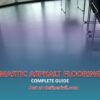Industrial operations rely on thousands of components working together—from large engines and numerous sophisticated control systems to small fasteners and seals. When a large piece of equipment breaks down, it is expected that there will be repairs and downtime. However, when operating managers are completely caught off guard is when the smallest and least suspected components fail—the ones that cost cents but have the ability to cause million dollar operations to stop instantly.
Among these least important components, there are perhaps no other components in industrial systems that are more necessary and less well thought of and selected than clamps. These simple devices hold together the connections, permit the flow of fluid, prevent leakage, and give pressure to systems. The result of the failure of these parts are felt throughout a system, and they produce havoc that, in impulse and finality of results, is many times greater than the cost of the small part that failed.
The significance of the fact that these small parts can produce such serious effects, illustrates the reason why experienced operators treat the selection and care of these parts with all the seriousness they would give the selection or care of major pieces of equipment.

The Anatomy of a System-Wide Failure
When a clamp fails in a high-pressure system, the initial leak might seem manageable. A small spray of coolant, hydraulic fluid, or process chemicals appears to be a minor maintenance issue. However, system failures rarely remain isolated in industrial environments where equipment operates in interconnected networks.
The leaked fluid creates immediate problems beyond the obvious mess. Coolant loss can cause engines to overheat within minutes, leading to catastrophic damage. Hydraulic fluid loss reduces system pressure, causing machinery to lose power or fail completely. Chemical leaks can contaminate surrounding equipment, create safety hazards, or trigger environmental compliance issues that shut down entire facilities.
But the indirect effects often prove more costly than the immediate damage. Production lines stop while repairs are made. Workers stand idle while systems are drained, cleaned, and refilled. Quality control procedures require scrapping products that may have been contaminated. Delivery schedules get disrupted, affecting customer relationships and contractual obligations.
The financial mathematics of these failures can be staggering. A manufacturing plant producing thousands of units per hour might lose more revenue in a single day of downtime than the annual budget for all maintenance supplies combined.
Where Clamps Matter Most
Marine applications represent some of the most demanding environments for clamp reliability. Engine cooling systems, fuel lines, and hydraulic steering systems all depend on secure connections that must withstand constant vibration, temperature extremes, and corrosive saltwater environments. A cooling system failure miles from shore can disable a vessel completely, creating safety hazards and expensive rescue situations.
Mining operations present another environment where clamp failures have severe consequences. Heavy machinery operates in dusty, abrasive conditions where equipment downtime directly impacts production quotas. When Hose Clamps fail on hydraulic systems that power massive excavators or conveyor systems, entire mining operations can halt while repairs are made in challenging field conditions.
Construction sites face similar challenges with mobile equipment that must operate reliably far from repair facilities. Hydraulic systems that power cranes, concrete pumps, and earthmoving equipment depend on secure connections that withstand constant movement and varying loads. Equipment failures on construction sites affect not only the immediate project but can cascade through interconnected trades and subcontractors.
Manufacturing plants with continuous processes face perhaps the highest stakes of all. Chemical processing, food production, and pharmaceutical manufacturing often run 24/7 operations where any interruption triggers complex shutdown and restart procedures. The cost of stopping and restarting these processes often exceeds the value of several days of normal production.
The Quality Divide
Not all hose clamps are created equal, and differences become apparent when stress is applied. Low-cost clamps may perform adequately under normal conditions but fail when systems experience vibration, temperature cycling, or pressure spikes. The materials used in construction, the precision of manufacturing, and the design of clamping mechanisms all affect long-term reliability.
Worm drive clamps offer different advantages than T-bolt designs, with each type suited to specific applications and pressure ranges. Understanding these differences becomes crucial when system reliability depends on every connection point performing consistently over extended periods.
The hidden costs of using substandard clamps extend beyond failure rates. Inferior clamps may require more frequent retightening, increasing maintenance labor costs. They might damage hoses through uneven pressure distribution, requiring more frequent hose replacement. Poor-quality materials can corrode faster in harsh environments, creating maintenance headaches that compound over time.
Prevention Through Selection
Experienced maintenance managers treat clamp selection as a reliability investment rather than a cost-cutting opportunity. They understand that the few dollars saved on cheaper clamps pale compared to the potential costs of system failures and unplanned downtime.
Proper sizing ensures clamps can handle expected pressure ranges with adequate safety margins. Material selection considers environmental factors including temperature extremes, chemical exposure, and corrosion potential. Brand selection often favors suppliers with proven track records in demanding applications over unknown manufacturers offering lower prices.
Documentation plays a crucial role in maintaining system reliability. Knowing what types and sizes of clamps are installed throughout a facility allows maintenance teams to stock appropriate replacements and plan preventive maintenance schedules. This preparation prevents emergency situations where operations halt while waiting for the correct replacement parts.
The Maintenance Perspective
Regular inspection of clamp connections should be part of systematic maintenance programs, but these small components often get overlooked during routine checks. Visual inspection can identify obvious problems such as corrosion, cracking, or loosening, but many clamp failures develop gradually through fatigue or material degradation.
Torque specifications matter more than many operators realize. Over-tightening can damage hoses or create stress concentrations that lead to premature failure. Under-tightening allows connections to loosen through vibration or thermal cycling. Following manufacturer specifications and using appropriate tools ensures connections remain secure without causing damage.
Replacement intervals depend on operating conditions, but preventive replacement often costs less than reactive repairs. Systems operating in harsh environments or critical applications may justify replacing clamps on scheduled intervals regardless of their apparent condition.
The Bigger Picture
The lesson from clamp failures extends beyond just these specific components. Small parts throughout industrial systems have the potential to cause disproportionate damage when they fail. Recognizing this relationship helps operations managers allocate maintenance resources more effectively and avoid the false economy of cutting costs on critical components.
Successful operations understand that reliability comes from attention to every detail, not just the obvious major components. The clamps, gaskets, fasteners, and seals that seem insignificant individually form the foundation that allows complex systems to operate reliably over extended periods.
When operations run smoothly, these small components remain invisible. But when they fail, their importance becomes immediately and expensively apparent. Smart operators invest in quality components and systematic maintenance to keep these potential failure points from becoming operational disasters.

















